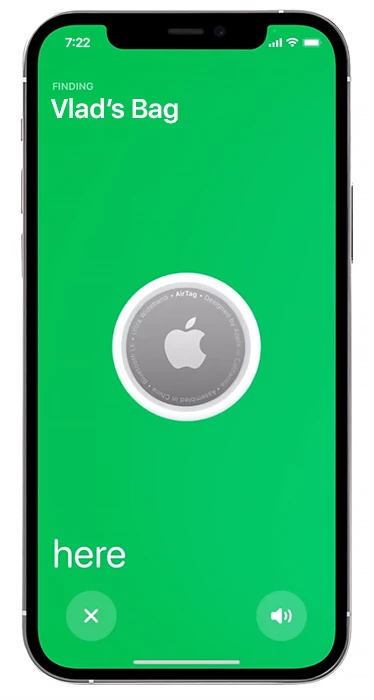Hi.
That’s just a short piece of text with my thoughts. I recently talked with my friend about Apple Vision and its market perspectives, and there was one phrase that made me think about it once over and over again.
He said: “$3,500 is an insane price, considering there’s Quest 3 for just around $500”. And first glance, I seemed to agree with him. But what if we consider this from another point, not just me wanting to buy any headset to try what new technologies are about?
What’s the point?
As the tech giants Apple and Meta (formerly Facebook) charge full steam ahead into the world of mixed and virtual reality, their flagship devices—the Apple Vision Pro and the Quest 3—are being tossed into the ring against each other. The comparisons seem inevitable, given their cutting-edge immersive technology. But should we even be comparing them? Are these headsets designed for the same purposes, and do they serve the same audiences? Let’s dive deeper into the different visions shaping these devices and assess whether these comparisons are warranted or misplaced.
The new vision on AR+VR
Apple unveiled its new Vision Pro mixed-reality headset at the Worldwide Developers Conference, instantly stealing the limelight in tech circles. Priced at a whopping $3,499, it starkly contrasts Meta’s more affordable Quest 3 headset, available for just $500. While the price tags are noteworthy, they hint at fundamentally different visions and strategies pursued by the two tech behemoths.
Apple’s Vision Pro is not merely a foray into VR and mixed reality; it’s an ambitious reimagining of personal computing. The headset’s innovative features, like mixed reality and EyeSight, foster intimate and vivid interactions. It’s like an upgraded, supercharged version of your Mac, designed to immerse you into a high-resolution, three-dimensional workspace or any space.
Apple seems to be leaning heavily into this solitary computing experience, whereas Meta’s approach, as one might expect, is profoundly social. Meta envisions the Quest 3 as a gaming device and a portal to its much-publicized metaverse, a shared virtual space for social interaction and community building. This divergence reflects the two companies’ underlying philosophies: Apple’s hardware-centric focus on individual experiences versus Meta’s emphasis on connectedness and social media.
Workspace vs Metaverse
Comparing the Vision Pro to the Quest 3 is somewhat like comparing apples to oranges. The Vision Pro is akin to a high-powered laptop, offering sophisticated immersive experiences tailored to individuals. On the other hand, the Quest 3 is more like an advanced gaming console, emphasizing social interaction and shared experiences. Their price tags reflect these distinctions. The Vision Pro is pitched at the premium end of the market, akin to a high-end MacBook. The Quest 3, meanwhile, is priced competitively with gaming consoles like the Xbox Series X.
While Apple hasn’t explicitly mentioned the metaverse, Meta, unsurprisingly, has built its strategy around this concept. It hopes to foster a sense of “presence”—the feeling that you’re truly “there” with others, regardless of physical distance. This goal is inherently more complex, dependent not just on individual adoption but on the network effect: the value of the metaverse grows as more and more people join it.
Conversely, Apple’s Vision Pro offers a personal and portable immersive experience. It’s aimed at people who want to plunge into their own customized virtual world, whether for work or leisure. Its high price may slow mass-market adoption, but it’s clear that Apple is targeting a niche audience with this product—an audience that values premium experiences and has the means to pay for them.
Meta’s Quest 3 is, in contrast, far more accessible. Priced competitively and built around a vision of shared virtual experiences, it’s designed to bring the metaverse to as many people as possible. It’s an attractive proposition for gaming enthusiasts and social media users, offering an entry point into VR and the potential for an entirely new form of social interaction.
So, is there any reason to compare them?
While pitting the Vision Pro and Quest 3 against each other in a battle of the headsets may be tempting, doing so glosses over the fundamentally different visions driving these products. They cater to distinct audiences and serve different purposes in the evolving mixed reality landscape.
It’s crucial to acknowledge that these comparisons often arise due to the prominence of both Apple and Meta in the tech industry. With its widespread recognition and popularity, the Quest headset was the go-to entry point into virtual and mixed reality until Apple stepped onto the scene. However, the comparisons overlook that Apple and Meta pursue different paths in immersive technology.
With its advanced capabilities, Vision Pro is suitable for traditional computer work and potentially even better than traditional laptops in many ways. At least, that’s a new way of how we work and how we interact with our workspace and computers at all. The simple as with the first iPhone that changed how we see smartphones and, over time, was one of the main rams that destroyed a wall between “computing on your computer” and the same thing but with the device that lies right here in your pocket. This lends credence to its higher price tag. On the other hand, the Quest, and likely the Quest 3, is focused primarily on gaming, aligning the $500 price point with other high-end gaming consoles like the PS5 and Xbox Series X.
That’s not about the product; that’s about companies
The divergence between Apple’s and Meta’s visions becomes apparent when examining their core competencies. Apple is about hardware and services to use the hardware. It creates innovative and premium devices. The Vision Pro aligns with this ethos, positioning itself as a pioneering personal computing device that redefines productivity and immersive experiences. It’s an evolutionary step for individual computing, pushing the boundaries of what we can achieve within a virtual environment.
In contrast, Meta, as its name suggests, is deeply rooted in social media. The Quest 3, with its more affordable price and emphasis on social interaction, serves as a gateway to Meta’s future metaverse, where people can connect, play, and explore together. Meta envisions a future where the metaverse becomes a vibrant and interconnected space, fostering shared experiences and bringing people closer, regardless of physical distance.
Do you feel how contrary these two approaches are? With its Quest, Meta doesn’t want you to change how you use your computer (in general meaning); they want to change how you interact within social networks. Apple is aiming at a different goal – to change how you use your computer.
While the Vision Pro and the Quest 3 are remarkable technological achievements, their purposes and target audiences are distinct. The Vision Pro caters to individuals who crave an advanced and personalized computing experience with capabilities that surpass traditional devices. It positions itself as a tool for professionals and enthusiasts seeking unparalleled immersion.
On the other hand, Quest 3 thrives in gaming and social engagement, appealing to a broader audience looking for accessible virtual experiences and connectivity. It aims to democratize virtual reality and bring the metaverse closer to mainstream adoption.
There’s no shared point to compare
So, before rushing to compare Vision Pro and Quest 3, it’s essential to recognize the divergent visions and strategies behind these devices. They represent different paths within the vast augmented, virtual, and mixed reality landscape, each with unique strengths and intended use cases. Instead of pitting them against each other, it’s more productive to appreciate the diversity and innovation they bring.
Apple Vision Pro and Meta’s Quest 3 should not be directly compared as competitors vying for the same market. Their divergent visions and target audiences make them distinct products, each pushing the boundaries of what’s possible in their respective domains.





